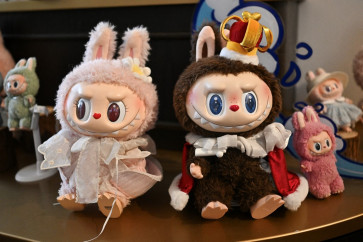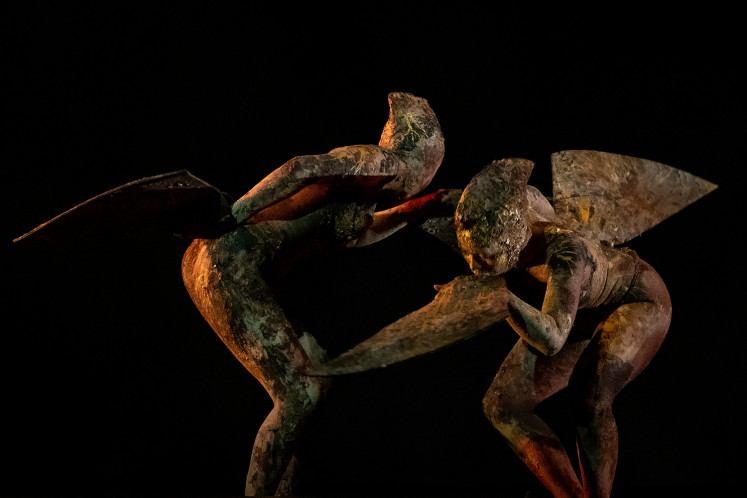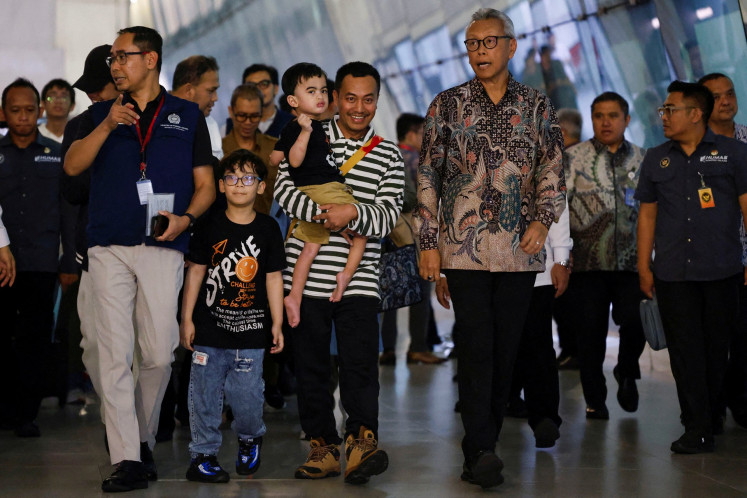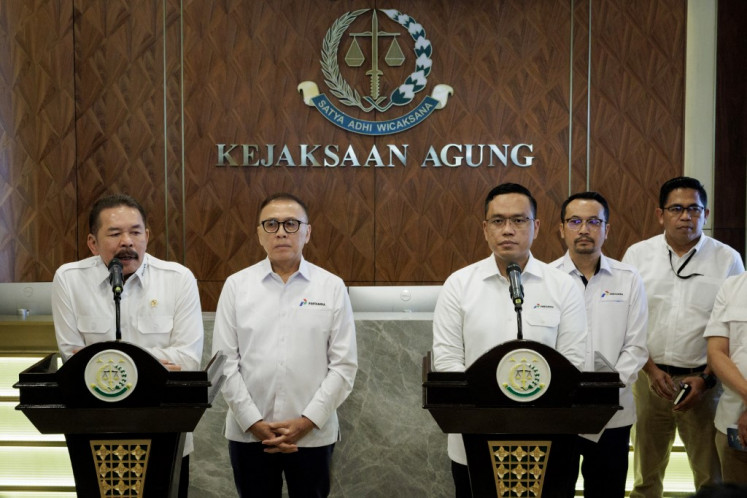Popular Reads
Top Results
Can't find what you're looking for?
View all search resultsPopular Reads
Top Results
Can't find what you're looking for?
View all search resultsJoko Dwi Avianto: Weaving bamboo into art
His latest work of art has become a source of controversy.
Change text size
Gift Premium Articles
to Anyone
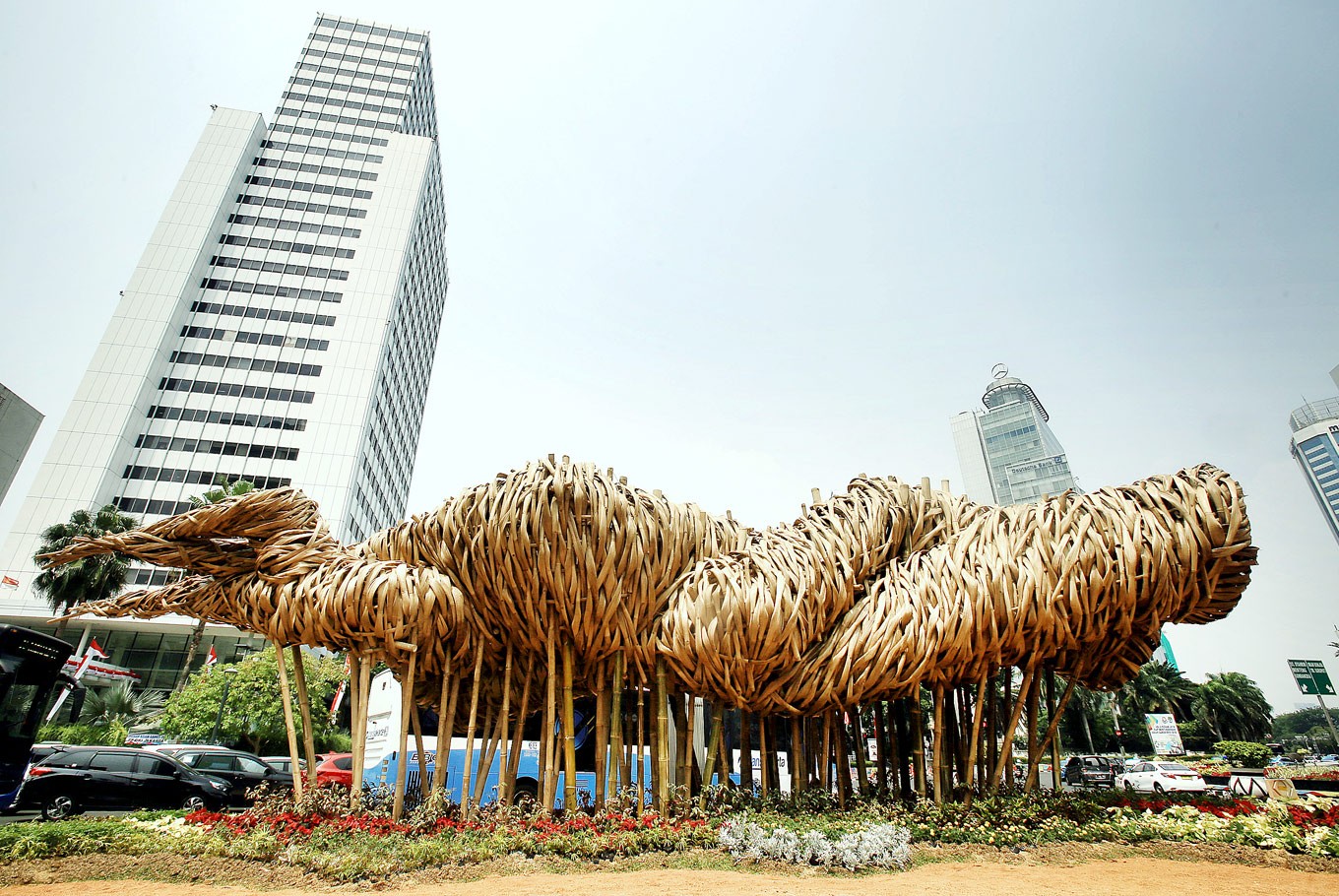 New icon: Artist Joko Dwi Avianto’s Getih Getah installation sits in the busy Thamrin area, in the heart of Jakarta. (JP/Dhoni Setiawan)
New icon: Artist Joko Dwi Avianto’s Getih Getah installation sits in the busy Thamrin area, in the heart of Jakarta. (JP/Dhoni Setiawan)
T
hroughout history, bamboo has been renowned for its strength, flexibility and renewable qualities, with many considering it a superior material.
In a nod to bamboo’s qualities, artist Joko Dwi Avianto has designed and built a new Jakarta icon, titled Getih Getah (representing red and white respectively), which was inaugurated by Jakarta Governor Anies Baswedan on Aug. 16 near the Welcome Statue in the Thamrin area, in the heart of Jakarta.
The event was held as part of the 73rd Independence Day celebration and welcoming of participants of the 2018 Asian Games.
Joko said the bamboo installation took about a week to complete and install and would last for six to 12 months.
The installation consists of 1,600 stalks of awitali and betung bamboo varieties, stands at 5.5 meters tall, 13 m long and 4 m wide, and it is supported by 73 bamboo stalks, representing Indonesia’s 73 years of independence.
Joko said the shape of his artwork was inspired by a windsock, with the ends shaped like a twisted, knotted rope to represent unity.
“Some people might see the resemblance of a head and tail; this is to show the orientation of this installation,” Joko says.
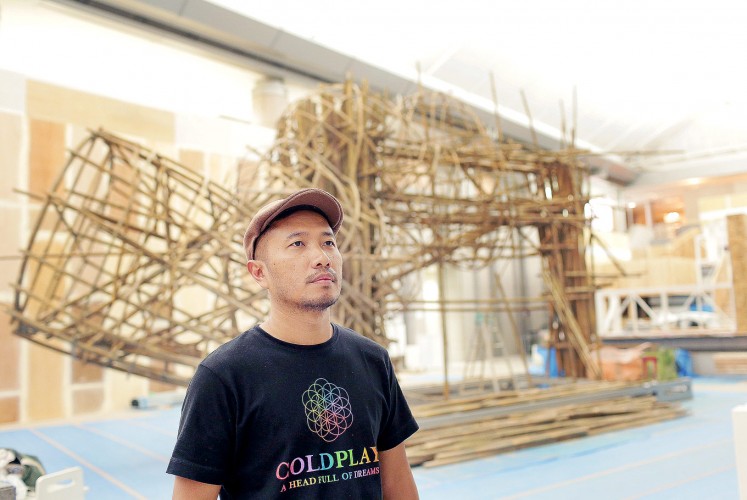
The shape, however, has elicited various comments and interpretations from the public, from humorous ones that suggest the shape resembles an erotic pose to serious ones with political tones.
But the artist said lightly that everybody was free to have their own perception or political interpretation. He just laughed and was thankful that his artwork was getting all that attention.
“As an artist who has spent many years in the art world, I already have an extensive reputation; therefore, I would not create anything carelessly,” said the 42-year-old, who was born in Cimahi, West Java.
The name Getih Getah was inspired by stories from the Majapahit era on how soldiers made a great impact when they waved their red-and-white flag as they disembarked from their ships and marched in large numbers.
In his mind, when creating the installation, Joko said he was picturing athletes getting ready to compete, like Majapahit warriors.
Joko said his signature method is to divide the bamboo so that it has the desired strength and flexibility.
“I found this division method more than 13 years ago and it has proven itself in the gigantic installations I have constructed,” said the artist, who got his bachelor’s and master’s degrees in arts and design from the Bandung Institute of Technology (ITB).
Segments of Indonesian bamboo, he said, can be developed into different interesting shapes. “When I tried working with Japanese bamboo, I found that I could not use the same treatment as the Indonesian bamboo,” he explained.
Joko’s gigantic bamboo artwork called Green is Gold Too was on show at Singapore’s Esplanade Concourse until July this year, where the artist put the spotlight on bamboo’s valuable qualities while drawing attention to environmental concerns caused by deforestation of bamboo forests.
Throughout his career, he has made a niche for himself as a bamboo artist since he began specializing in working with bamboo-related materials as his preferred medium.
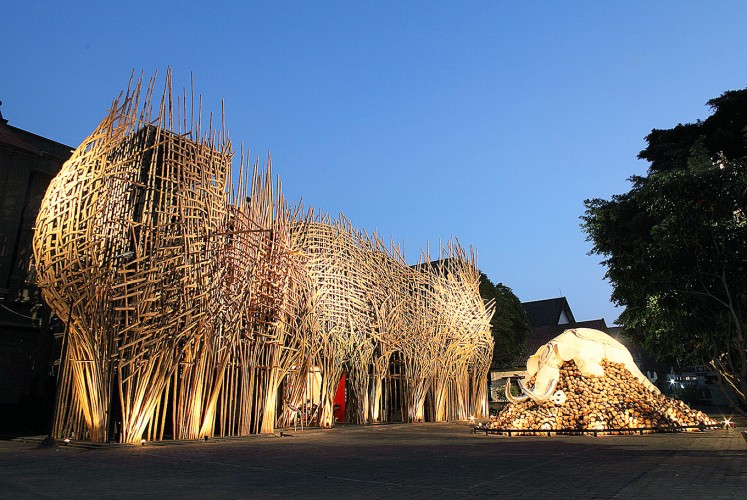
Joko acknowledges senior sculptor Rita Widagdo for convincing him that bamboo could become a unique material to be used in contemporary art.
“My first bamboo artwork exhibition was at Selasar Sunaryo in 2003, together with [artists] Handi Hermansyah and Pak Sunaryo himself. This exhibition received huge appreciation from the media. This urged me to shift from wood to bamboo as my main material,” he says.
An important turning point in his career came when he was commissioned to make an artwork for the 2012 ArtJog, which at that time was held at the Taman Budaya Yogyakarta cultural park.
“After this event, I got many offers for art projects, festivals and artfairs from various countries,” Joko says.
He also displayed his works at the George Town Festival 2013 in Penang Malaysia, as well as the 2014 Singapore Art Stage.
The 2015 Frankfurter Kunstverein was a turning point for Joko, who wrapped the 186-year-old museum’s façade with his rusty-looking installation talking about Indonesian and Asian culture for the “Root. Indonesia Contemporary Art” exhibition.
For the over 1,500 sticks of bamboo, Joko created a semi-enclosed space that gave an introduction to the exhibition inside. He called his artwork Pohon Besar (Big Tree).
In 2017 Joko held his first exhibition in Japan. He discovered visual and symbolic connections between his own works and the ancient Japanese braided rope called a shimenawa, which in Shinto signifies the boundary between the secular world and the sacred or ideal world.
For the event, Joko’s installation was constructed in the center of the Grand Gallery of the Yokohama Museum of Art using approximately 1,500 pieces of Indonesian bamboo. It was called The Border Between Good and Evil is Terribly Frilly.
Last July, Joko participated in the Rain Forest Festival in Kuching, Malaysia.
“The utilization of bamboo as a medium is in line with my ideas in criticizing the exploitation of nature, but my main focus will always be the problem of environment and man,” Joko says.



